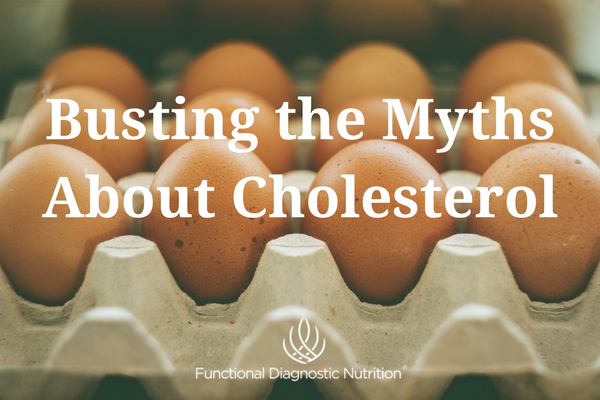There are many forms of heart disease. However, atherosclerosis causes the most concerns. Those with atherosclerosis experience hardened arteries that restrict blood flow to the heart. Scar tissue created when the body repairs damage to cells in the arterial lining causes atherosclerosis to occur. The scar tissue may also rupture. If this happens, blood clots may form, which can reduce or completely block blood flow to the heart. When cell damage occurs, plaque accumulates there in response. One of the components of plaque, cholesterol, earned its bad reputation simply by being at the scene of the crime.
Many accept that the buildup of plaque happens in the arterial wall, not at its surface. Damage of the cells directly results in plaque buildup. However, much of the general population still believes a myth about plaque buildup. Many believe that high levels of saturated fat and cholesterol cling to the arterial lining, accumulate and result in plaque buildup.
Good Health Requires Cholesterol
The membrane of a cell provides physical protection. It influences cell function by controlling interaction with hormones, neurotransmitters and other influential substances. It also controls the transfer of nutrients. Cholesterol is a key component of the cell membrane. This makes cholesterol an important factor in the health of the trillions of cells that make up the body.
Important sex and corticosteroid hormones require cholesterol to be produced. Another hormone that requires cholesterol for production is vitamin D. These hormones effect human function in nearly every way imaginable. And low levels of cholesterol will result in hormonal deficiencies and imbalances that can lead to major disease.
Nerve synapse development also needs cholesterol, which serves as a protective coating on nerve fibers. Low levels of cholesterol have been shown to be associated with memory disorders such as dementia and Alzheimer’s disease.
The Myth of Good and Bad Cholesterol
There are three types of measurements for cholesterol: total cholesterol, LDL cholesterol and HDL cholesterol. LDL and HDL are not actually cholesterol but are the lipoproteins that carry it through the blood. LDL carries cholesterol from the liver to tissue. HDL carries it away from tissue and back to the liver to be metabolized and reused.
LDL is regarded as “bad” because it brings cholesterol to arteries and HDL as “good” because it carries it away from arteries. The amount of cholesterol being transported throughout the body indicates of how much need the body has for it. A high level of LDL indicates an excessive amount of cellular damage that needs to be repaired. It doesn’t indicate that the liver is malfunctioning and producing too much cholesterol.
High Cholesterol Doesn’t Cause Heart Disease
Many still believe that cholesterol and saturated fat sticking to artery walls causes atherosclerosis. However, the scientific community now widely accepts that cell damage and inflammation that occur within the arterial lining are to blame.
When damage to the cells occurs, the immune system activates to repair it causing inflammation. During this process, repair materials can collect. Scar tissue can form, and the substances created by the immune system can cause additional damage. When this happens within the lining of the artery, it becomes restricted and less elastic. As cellular damage continues to occur, these effects accumulate and eventually result in atherosclerosis.
Certain factors cause cellular damage and inflammation in the lining of arteries. These include stress, high blood sugar levels, high blood pressure, exposure to toxic chemicals, lack of quality nutrition, and infection. Lifestyle contributes to all these factors and can be changed.
Ancel Keys
In 1953, physiologist Ancel Keys published a chart showing that the number of deaths caused by heart disease increases sharply along with an increase in fat intake. He wanted to identify consumption of saturated animal fats as the cause of heart disease.
The research used to create this chart included data for 22 countries. But Keys only used data for 6 of them. And he conveniently excluded the 16 other countries that didn’t support his theory. Many of the excluded countries showed either low incidence of heart disease despite a high fat intake, or they showed a high incidence of heart disease with a low-fat intake.
Contradicting Evidence
In the early 1960s, Professor George Mann of Vanderbilt University visited the Masai tribe of Kenya. He went to solidify Key’s theory. But instead, he found evidence that strongly contradicted it. The diet of this tribe consisted entirely of milk, blood and meat. They ate no vegetables whatsoever. And they consumed excessive amounts of dietary cholesterol and saturated fat.
In direct contrast to Key’s theory, they had no incidence of heart disease. And their cholesterol levels were 50% lower than those of Americans! Study of the Eskimos showed similar results.
Modern research on cholesterol, when looked at closely, shows a different story. Research shows that most people who die from heart disease have lower-than-average cholesterol levels. However, many researchers still support the idea that cholesterol causes heart disease. Corporate influence and dishonesty may be corrupting the research data.
But plenty of research on modern heart disease exists that dispels the cholesterol myths we’ve come to accept as common knowledge.
The Irony of the Healthy Heart Diet
Saturated fat and dietary cholesterol have become the enemy. Because of the false connection to heart disease, doctors and media warn the public to consume as little of these nutrients as possible. Even the US government’s “My Plate” website cautions people about consuming saturated fat. The site connects the eating of saturated fat to an increased risk of heart disease and encourages people to stop eating it to reduce that risk.
The body needs saturated fat and cholesterol to maintain proper cell function. Restricting them plays a significant role in the high incidence of poor health in modern society.
Some do much better than others on a high carbohydrate diet. But nobody does well on a diet high in processed carbohydrates such as bread and pasta. These foods cause drastic fluctuations in blood sugar levels. Blood sugar imbalances contribute to diabetes, but also damage arteries. They also cause the inflammation that leads to atherosclerosis.
Government recommendations encourage people to replace saturated fats with unsaturated fats found in vegetable oils. But nearly all vegetable oils are high in omega-6 fatty acids and other polyunsaturated fatty acids that are highly susceptible to oxidation. These factors promote the inflammation and tissue damage associated with atherosclerosis.
Who’s to Blame?
Most of the information we receive about cholesterol comes through mainstream media. But much of it originates from the pharmaceutical industry. The drug companies have successfully convinced people of the great risk of heart disease. This has gotten so out of hand that doctors now even prescribe cholesterol-lowering medication to children!
A shocking number of people currently take cholesterol medication. The drug ads downplay the benefits of a healthy lifestyle. Cholesterol medication is a $29 billion-dollar industry – one that keeps many families fed, puts many kids through college, and provides many executives with big houses and fancy cars. Because of the financial interests, there is tremendous incentive for the pharmaceutical industry to have people believe that their cholesterol level puts them at risk for heart disease.
Is Cholesterol Medication the Right Choice?
The pharmaceutical industry has significant influence on politics, medical schools and doctors. As a result, many of the doctors that prescribe you cholesterol-lowering medication directly feel this influence. Current guidelines suggest that anyone with a total cholesterol level above 200 mg/dl, is at risk for heart disease and should be on medication. Based on more recent recommendations, some doctors prescribing medication for anything above 185 mg/dl.
An honest analysis of heart disease research shows some populations have a low incidence of heart disease with cholesterol levels averaging around 250 mg/dl. In many cases, low cholesterol levels can be more dangerous than high levels, particularly in the elderly, and particularly when low cholesterol levels are a result of medication.
The Drug Industry
The pharmaceutical industry is literally turning millions of healthy people into patients and customers with their questionable guidelines. Many of your clients may be a part of this pattern.
With a good understanding of cholesterol’s role in the human body, it should be quite clear that high levels are much more of a symptom than a cause. And taking medication chases the symptoms, instead of getting to the heart of any dysfunction. Chasing symptoms is a temporary solution at best. And it completely neglects the lifestyle factors that cause cellular damage and inflammation in the arteries.
Statins, the most popular type of medication prescribed for lowering blood cholesterol, are often quite dangerous and create more risk than they reduce. The reasons why this medication is so dangerous are discussed thoroughly in two of the books listed below.
Further Reading
It is up to you to form your own conclusions and do more research on this topic. Most people need to be exposed to multiple sources of an opinion before opening their mind to it. The following three resources are great recommended reading to help you get a better and deeper understanding of the issues surrounding modern cholesterol beliefs.
Arm yourself with knowledge. This can help you have better information to share with your clients who may be getting information from their doctor. It can help you put together a better plan of action with them that can help them improve their health.
Recommended Books
The Cholesterol Myths by Uffe Ravnskov, MD, PhD. This book addresses 9 common myths regarding cholesterol. And it delves deep into the flawed and manipulated research that “supports” each one.
$29 Billion Reasons to Lie About Cholesterol by Justin Smith. An excellent resource that tells you everything you need to know about cholesterol, the dietary factors that influence it, and the questionable intentions of the pharmaceutical industry. Like Dr Ravnskov’s book, it also analyzes much of the “supporting” research.
Nutrition and Physical Degeneration, based on the work of Westin A. Price. This book provides undeniable evidence that primitive cultures who regularly consumed significant amounts of animal fat and cholesterol enjoyed exceptional health and suffered from very little disease.







